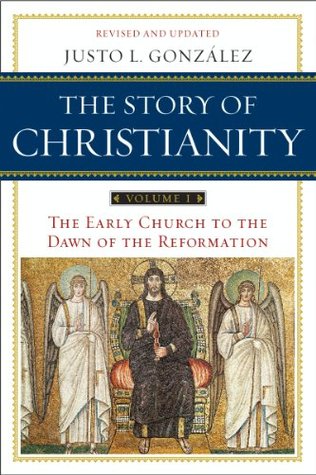More on this book
Community
Kindle Notes & Highlights
Read between
August 11 - October 9, 2017
his writings can only be understood by those who have spent many years studying the philosophy and theology of the time.
“Occam’s razor,”
the simplest explanation is usually the best one.
he was convinced that God does exist, even though such existence cannot be proven by rational argument, but simply accepted by faith.
Occam and his followers reached the conclusion that human natural reason can prove absolutely nothing regarding God or the divine purposes.
Strictly speaking, one should not say that God always does good, but rather that whatever God does, no matter what it might be, is good.
it is the sovereign will of God that determines what is to be reasonable and then,
all that is known of their lives would seem to indicate that they were devout and sincere believers.
was ready to believe anything that God had revealed.
Since reason cannot prove that a doctrine is true or false, one must make such determinations on the basis of infallible authorities.
God has ordered the divine power for our good. Therefore, all of God’s promises must be trusted, even though reason might lead us to doubt them.
their subtleties and their insistence on precise definitions and fine distinctions provoked the reaction of many
scholasticism followed a path that could not but provoke a negative reaction among many devout people
This gave rise to the Renaissance and to its counterpart in the field of literature, humanism.
The very name Renaissance, or rebirth, as applied to a historical period, implies a negative judgment on the preceding age.
The truth is that the Renaissance, while drinking from the sources of antiquity, also drew from the centuries immediately preceding it.
humanism is also the study of the humanities—what we call liberal arts today.
a literary movement that sought to return to the sources of classical literature, and to imitate its style.
When Constantinople fell to the Turks in 1453, Byzantine exiles flooded Italy with their knowledge of classical Greek literature.
the ideal of many Italian artists of the Renaissance was to rediscover the classical canons of beauty,
Gutenberg’s invention had a profound impact on humanism.
For the early humanists, the printing press was an excellent medium for communication among scholars, or for duplicating the writings of antiquity, but not for popularizing their ideas.
If a scholar, by comparing several manuscripts, produced a reliable text of an ancient writing, and supervised its printing, that work would be of permanent value, for it would not have to be entrusted again to a multitude of copyists who might introduce new errors.
The discovery of the extent to which mistakes had crept into ancient texts led to doubts as to the authenticity of some of the texts themselves.
It would take some time for the notion to spread, that Christianity as it then existed was not what it had always been, and that a return to its roots was necessary.
most of the works of this period were not created to extol the glories of heaven but rather of those who paid for them.
There were few areas of human endeavor into which this great genius of the Renaissance did not delve.
His goal—which coincided with the ideal of his time—was to be the universal man.
According to Pico, we have been given by God all kinds of seeds, so that we can decide which we are to sow within ourselves, and therefore what we become.
Although the Renaissance was for Italy a time of great prosperity, it was also a time of upheaval.
It was within this context of prosperity, intrigues, turmoil, and Renaissance ideals that the papacy existed during the final generations before the Reformation.
Since then and until the outbreak of the Protestant Reformation, the goals and ideals of most popes would be those of the Renaissance:
many devised new sources of income that would allow them to continue their aggrandizement of Rome and its art.
Most of them were carried away by the spirit of the age, as could be seen in their love of pomp, despotic power, and sensual pleasure.
During his reign, nepotism reached new heights.
The next pope, Pius II (1458–1464), was the last of the Renaissance popes to take his office seriously.
he did not turn the papacy into a means to increase his power or that of his family.
His main project was the recovery of the architectural and monumental glory of pagan Rome, to which he devoted a great deal of wealth and attention.
During his reign, corruption and nepotism reached new heights. The main thrust of his policy was to enrich his family, particularly his five nephews.
posterity has forgotten most of Sixtus’s misdeeds, and remembers him mostly for the Sistine Chapel,
Under him, papal corruption reached its peak.
Even though the worst stories told about this family are probably untrue, those that are undeniable are still enough to convict the pope of corruption and boundless lust for power.
took that name to indicate that his model was not a Christian saint, but rather Julius Caesar.
His passion for the arts overshadowed any religious or pastoral concerns, and his great dream was to complete the great basilica of St. Peter, in Rome.
the man occupying the papacy when the Protestant Reformation began was unequal to the challenge before him.
it was precisely during this period that Catholicism enjoyed its most rapid expansion.
in order to understand the present course of Roman Catholicism it is necessary to understand the forces that shaped it in those lands.
Their reason for doing this was not simple greed, but the experience of long years of struggle to assert their authority in Spain.
the sovereigns could not grant him such wealth and power.
this usually resulted in the crown enacting laws for the protection of those whom Columbus mistakenly dubbed “Indians.”


